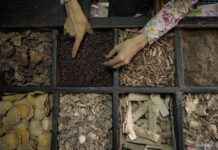Connection Between Tuberculosis and Red Dead Redemption 2
In the late 19th century, the New England region was ravaged by a deadly tuberculosis (TB) outbreak, known as the “wasting disease” due to its severe weight loss and weakening effects on the afflicted individuals. As medical knowledge was still evolving, people sought alternative explanations for this rapidly spreading epidemic. Little did they know that this health crisis would intertwine with beliefs in vampirism, creating a chilling connection between disease and folklore.
The Fear of Vampires
The fear of vampires emerged as a response to the uncertainty and dread surrounding TB. The local community believed that vampires, supernatural creatures that feed on blood, were responsible for the disease’s spread. In a state of panic, they resorted to grave-robbing in search of signs of vampirism.
Michael Bell and Vampiric Burials
Michael Bell, a folklore expert from Rhode Island, meticulously documented around 80 vampire burials in New England. His research revealed that many families were compelled to perform bizarre rituals on deceased relatives suspected of being vampires to halt the disease’s spread.
Vampiric Burial Rituals
The burial rituals for suspected vampires were incredibly peculiar and often carried out clandestinely. People would burn the heart of the deceased and invert the body’s position in the grave. This was believed to prevent the vampire from rising again and spreading further illness, creating an eerie and haunting atmosphere that lingers in memory to this day.
As we delve into this dark chapter of history, it’s important to reflect on how fear and misinformation can lead to drastic measures. The desperation of the New England community during the TB outbreak highlights the innate human desire to seek solace in the supernatural when faced with the unknown. Despite the seemingly irrational nature of the vampire burial rituals, they serve as a reminder of the lengths people will go to in times of crisis.
Imagine the chilling scenes of families secretly performing these rituals under the cover of night, driven by a mix of fear and hope for protection against the deadly disease. The echoes of their actions resonate through time, reminding us of the fragility of human understanding in the face of adversity.
It is crucial to learn from history and strive for better education and awareness in combating disease outbreaks. By understanding the past, we can equip ourselves with the knowledge needed to navigate present and future health crises with clarity and reason. The connection between TB and vampire burial rituals in New England serves as a poignant reminder of the power of knowledge in overcoming fear and uncertainty.






















